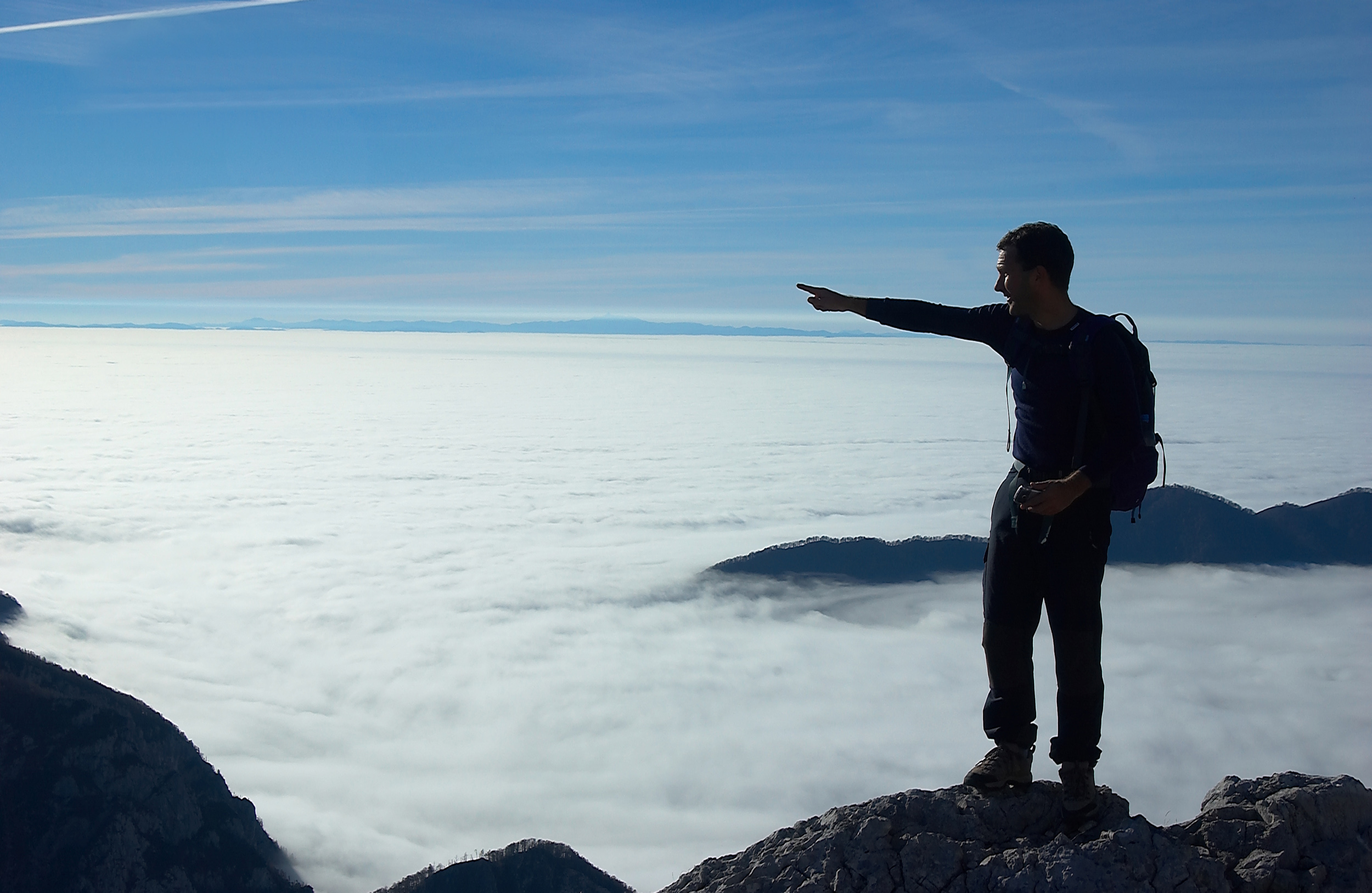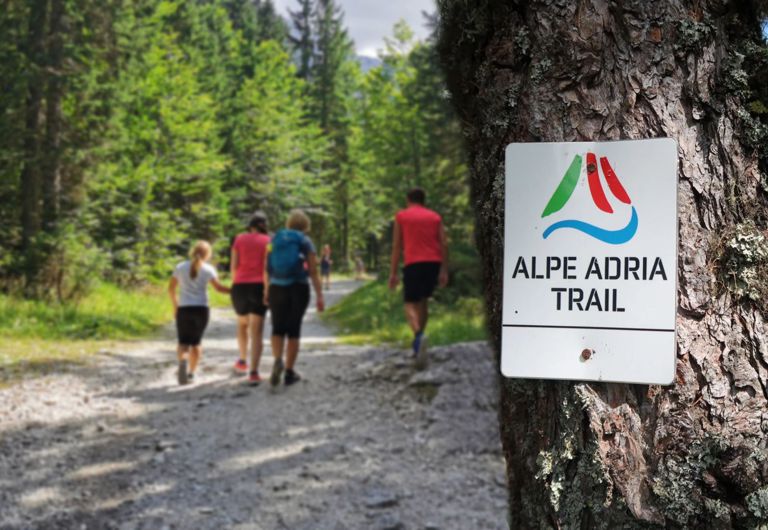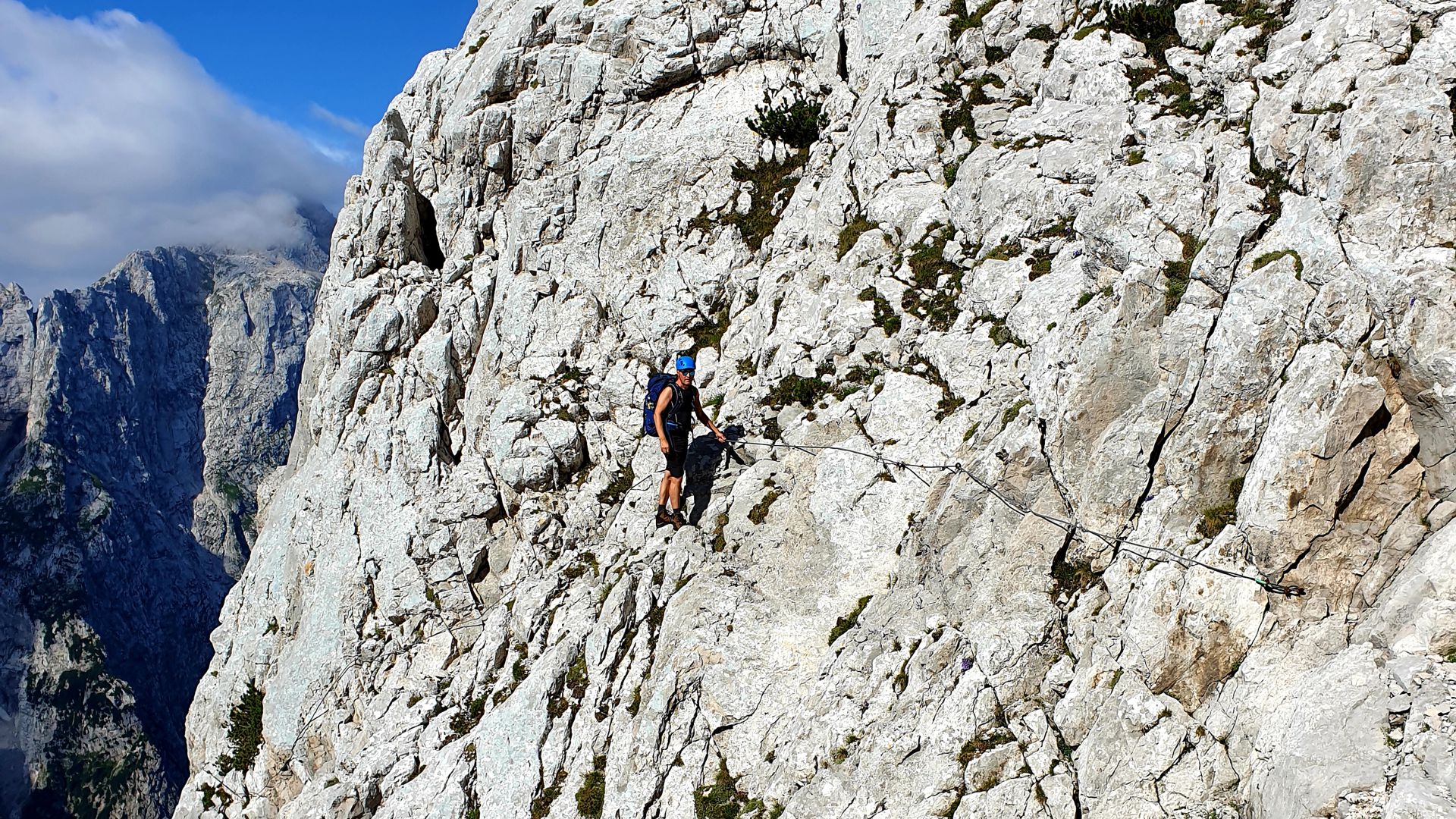From the bivouac, the trail will take you across scree, grassy slopes and pastures, and soon you will reach 2,000 m above sea level. The trail will then traverse the south-eastern slope of Dolkova špica (2,591 m) standing between Stenar and Škrlatica. At the end of the slope, the trail makes a slight descent into a basin, where snow remains until late summer. You will continue traversing gentle slopes, and, after a good half hour of walking, start the climb towards the Zadnji Dolek cirque. As you cross the scree slope, you will reach the most challenging part of the trail, the entry to the rock wall. Before starting the climb, put away your hiking poles and put on your helmet. Climbing gloves are also recommended. You will need some climbing skills and strength in your arms to deal with this part. The climbing route is well-secured with steel cables, pins and rungs. It includes a somewhat challenging traverse of a smooth rock ledge, secured with pins. The steep climb is followed by easier scrambling across sharp, scattered rocks before exiting the climbing part of the trail. Along the way, there are some breathtaking views of the sheer rock faces and nearby peaks. Make sure you don’t miss Škrlatica’s natural rock window while climbing up to the ridge. Many only notice it while descending. As you come out on the ridge, the trail levels up and turns to the east. The eastern side of Škrlatica offers great views of the most beautiful peaks of the Julian Alps, with Triglav in the palm of your hand. From here, you can see the cirque called V Kotlu, lying under the sharp Rokavi ridge, the Triglav north wall, the sharp “teeth” of the Martuljek mountains chain and much more.
When you see a large cross, you have reached the top of the second highest mountain in Slovenia.
There are spectacular views from the top of almost all the major peaks of the Julian Alps (Triglav, Špik, Martuljške Ponce, Oltarji, Rokavi, Dolkova špica, Cmir, Prisojnik, Razor, Mangart, Jalovec and many others).
Trail difficulty
It will take you about 5 hours to reach the top of Škrlatica from the Vrata Valley, and you will gain 1,725 m of elevation. This trail is quite demanding, mainly due to its length. The trail is moderately difficult in terms of technique. It is well-maintained and signposted.














